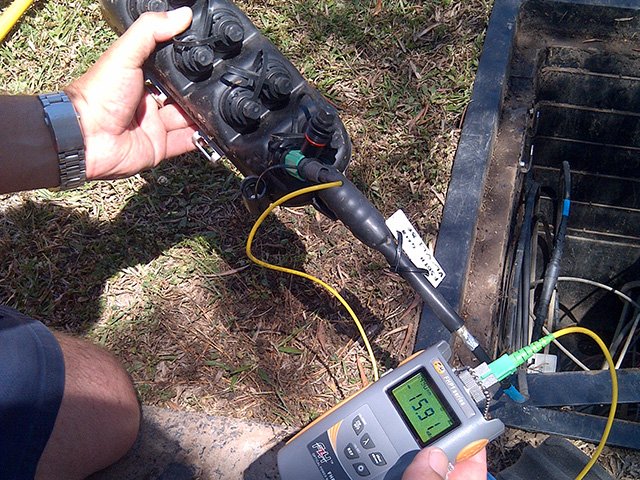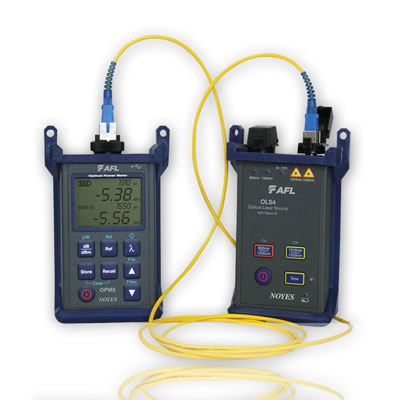Professionals use optical fibre testing equipment to maintain stable data transmission.
The Duty of Optical Fiber Testing in Ensuring Quality and Effectiveness in Connection Solutions
In today's swiftly evolving digital landscape, the relevance of optical fibre screening can not be overstated, as it serves as a foundation for guaranteeing the high quality and performance of connectivity services. By employing a range of screening techniques, including OTDR and loss assessments, companies can proactively determine and mitigate potential network issues that may hinder efficiency. Regular screening not just lines up with sector requirements yet also leads the way for enhanced information transmission. However, as technology proceeds to advancement, the future of optical fiber testing positions appealing obstacles and chances that merit closer exam.
Value of Optical Fiber Testing
The value of optical fiber screening can not be overstated in making sure the honesty and performance of communication networks. As the backbone of modern telecoms, optical fibers facilitate high-speed data transmission, making their integrity crucial to functional success. Examining functions as a positive action to identify prospective issues such as signal loss, attenuation, and physical damage, which can jeopardize network efficiency.
Normal testing allows for the verification of setup top quality and the discovery of defects that could impact information honesty - optical fibre diameter analyser. By employing extensive testing procedures, network drivers can mitigate the risks related to network failures, consisting of downtime and economic losses. Furthermore, optical fibre screening makes certain compliance with sector requirements and laws, improving the general quality of solution provided to end-users.
Eventually, the methodical analysis of optical fibers adds to the durability and effectiveness of interaction systems. It makes it possible for stakeholders to make educated decisions pertaining to upkeep, upgrades, and troubleshooting. In a landscape where data is increasingly important, focusing on optical fiber testing is necessary to maintaining robust and efficient connectivity solutions, thereby sustaining the needs of contemporary digital environments.
Kinds of Optical Fiber Tests
Various screening techniques are employed to make certain the capability and dependability of optical fibers within communication networks. These examinations can be generally classified into 2 primary types: installment examinations and maintenance tests.
Installment tests are performed quickly after the setup of optical fiber cords to verify their efficiency and integrity - robotic vision. One of the most common installment tests consist of Optical Time-Domain Reflectometry (OTDR) examinations, which evaluate the top quality of the fibre by recognizing faults or breaks, and end-to-end loss examinations, which measure the overall optical loss from one end of the fiber to the other
Upkeep examinations, on the various other hand, are done regularly to guarantee ongoing performance and detect prospective concerns in time. These consist of aesthetic evaluation, which look for physical problems or improper setups, and connection tests, which confirm that the signal can travel through the fibre without interruption.
Additionally, advanced examinations such as Polarization Setting Diffusion (PMD) and Chromatic Dispersion (CD) tests can be carried out to examine the fiber's performance under various conditions. By utilizing these varied screening methods, service technicians can keep high standards of high quality and integrity in optical fiber networks.
Benefits of Routine Checking
Regular testing of optical fibres plays a critical duty in maintaining the overall efficiency and integrity of communication networks. By carrying out normal official site assessments, companies can ensure that their fibre optic setups fulfill market standards and operate efficiently. This positive approach helps to recognize potential weaknesses and degradation over time, enabling timely interventions before issues escalate.

Cost-effectiveness is one more benefit. By attending to minor concerns early, organizations can avoid the high prices connected with major fixings or system failures. Normal testing also cultivates compliance with regulatory needs, making sure that the network adheres to essential security and performance criteria.
Typical Problems Determined
Determining common concerns in optical fibre networks is important for keeping optimal performance and integrity. Different variables can add to interruptions, including physical damage, bad installation methods, and ecological impacts.
Physical damage, such as bends, breaks, or abrasions, can substantially degrade signal high quality. Inappropriate installation methods, consisting of too much tension or insufficient safeguarding of cable televisions, might bring about enhanced attenuation and loss of connection. In addition, ecological elements such as temperature level variations, moisture ingress, and rodent disturbance can compromise the stability of the fiber.
Adapter issues also often develop, with incorrect placement or contamination leading to enhanced insertion loss. Splicing mistakes can present substantial signal destruction if not executed with precision.

Dealing with these typical problems via normal optical fibre screening not just enhances network integrity but additionally enhances total efficiency, guaranteeing that connection remedies remain robust and effective.
Future Patterns in Testing
As the need for high-speed connection remains to rise, the future of optical fiber screening will significantly concentrate on automation and progressed analytics. The integration of fabricated intelligence (AI) and device discovering (ML) in screening processes will allow much more efficient data evaluation and anticipating maintenance, decreasing downtime and boosting total network dependability. Automated testing solutions will enhance the inspection and qualification of fibre networks, decreasing human error and boosting screening throughput.
Another significant trend is the adoption of remote testing technologies. As the deployment of fibre networks expands into remote and underserved areas, remote testing capabilities will allow specialists to keep track of and identify network problems without physical presence, thereby decreasing operational expenses and boosting feedback times.
Additionally, there will certainly be a change towards more thorough screening standards that include not just typical loss measurements however additionally efficiency metrics such as latency and bandwidth use. This all natural approach will facilitate much better network administration and optimization approaches.
As these trends advance, the optical fiber testing landscape will not just boost the top quality and effectiveness of connectivity services yet additionally sustain the growing complexities of modern-day communication networks.
Conclusion
Finally, optical fibre screening go to website functions as a fundamental part in preserving the honesty and effectiveness of communication networks. By methodically evaluating numerous specifications through developed testing approaches, prospective issues are recognized and remedied, making sure optimal efficiency. The ongoing dedication to regular testing not just enhances data transmission but likewise straightens with industry requirements, fostering dependability in network frameworks. As innovation advances, the significance of cutting-edge testing techniques will proceed to expand, further advancing connection services.